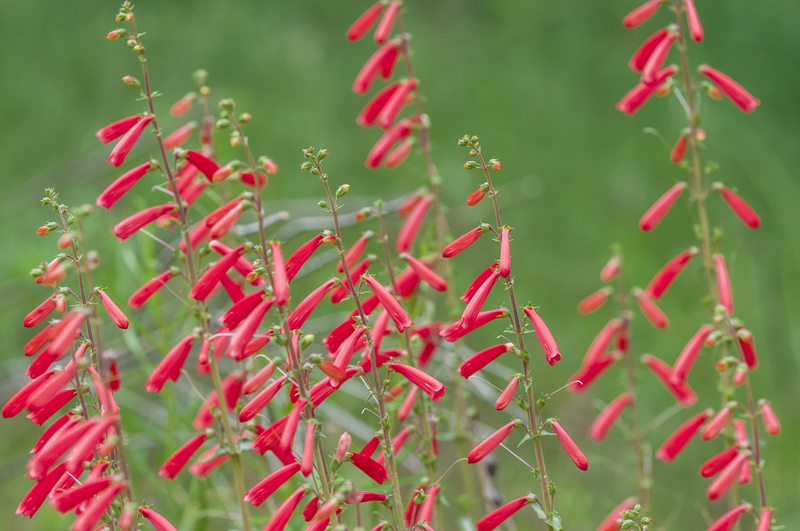Crafting a Garden that Combines Learning and Play
Posted on 02/06/2025
Crafting a Garden that Combines Learning and Play
Gardens are more than just spaces of aesthetic pleasure; they are living classrooms and imaginative playgrounds. Crafting a garden that combines learning and play transforms a simple outdoor area into a hub where curiosity blossoms, and holistic development takes root. In this comprehensive guide, discover how to design a multifunctional garden that stimulates minds and fuels playful exploration for children of all ages.
Why Merge Learning and Play in the Garden?
Children learn best through hands-on experiences. The outdoor environment nurtures creativity, problem-solving, and social skills. When learning and play are integrated within the garden, children develop cognitive, physical, and emotional skills while connecting deeply with nature.
- Real-World Application: Activities such as planting, counting seeds, or observing insects offer a practical context for academic skills.
- Multi-Sensory Stimulation: Touching leaves, smelling flowers, listening to birds, and watching butterflies engage all senses for enriched learning.
- Encourages Curiosity: Unstructured play fosters questioning, experimentation, and discovery, the cornerstones of lifelong learning.
- Physical Health: Climbing, digging, and running in the garden support gross motor development and overall health.

Key Elements of a Learning-Through-Play Garden Design
To create a garden that seamlessly blends play and educational opportunities, it's important to include thoughtfully chosen features and structures. Below are essential elements and design tips for building a thriving learning garden playground:
Interactive Garden Beds
- Raised Planters: Accessible for all ages and abilities, raised beds encourage kids to plant, water, and harvest.
- Sensory Gardens: Incorporate a variety of plant textures, colors, and scents to spark sensory exploration.
- Experiment Zones: Dedicate sections for science experiments. For instance, compare plant growth with and without sunlight, or test different watering methods.
Nature Play Structures
- Natural Climbing Elements: Logs, boulders, and stumps offer safe, dynamic opportunities for building strength and balance.
- Loose Parts Play: Provide materials like sticks, stones, and leaves for imaginative construction and creative play.
- Water and Sand Play: Simple water channels or sand pits encourage sensory experiences, learning about flow, and cooperative play.
Themed Discovery Areas
- Miniature Wildlife Habitats: Butterly gardens, bee hotels, and bird feeders encourage wildlife observation and stewardship.
- Math Paths: Use stepping stones for counting, sequencing, and hopscotch games.
- Story Nooks: Cozy outdoor reading corners with weather-resistant books and natural seating foster literacy surrounded by nature.
Practical Steps for Garden Creation
Building a play-based educational garden requires planning and engagement. Here's a step-by-step approach to crafting a unique and sun-filled sanctuary for growth and discovery:
1. Assess Space and Sunlight
Evaluate your available garden area. Whether a tiny balcony or a sprawling backyard, you can design learning-rich zones. Observe how much sunlight and shade the space receives throughout the day to guide plant selection.
2. Gather Ideas from Stakeholders
- Children's Input: Talk to kids about their favorite outdoor activities, plants, and creatures. Their preferences can inspire design choices.
- Teachers and Parents: Educators and caregivers can provide insight into curriculum links and practical safety concerns.
3. Design Multifunctional Spaces
Plan for flexiblity! Mark out different zones with clear borders using plants, rocks, or pathways. Consider:
- Active Play Areas - Climbing, balance, running, and nature building.
- Quiet Reflection Spaces - Reading, meditating, observing.
- Food Growing Beds - Vegetables, herbs, berries, and edible flowers.
- Wildlife Corners - Spaces for insects, birds, and amphibians.
4. Select Plants for Learning & Play
- Edible Plants: Encourage children to participate in growing what they can eat, such as cherry tomatoes, strawberries, and snap peas.
- Fast-Growing Choices: Sunflowers and beans help impatient learners witness rapid growth.
- Sensory Selection: Lamb's ear (soft), lavender (fragrant), and bright marigolds (colorful) stimulate touch, smell, and sight.
- Native Plants: Attract local pollinators and minimize maintenance.
5. Incorporate Child-Friendly Materials and Signage
- Safe Surfaces: Use mulch, grass, or rubber mats to cushion falls in play zones.
- Clear Paths: Help kids follow trails or routes with stones or painted arrows.
- Educational Signs: Labels for plants, pictorial guides, and fun facts support independent learning.
6. Plan for All Seasons
Year-round interest is essential. Mix evergreen plants with bulbs and deciduous trees for changing textures and colors each season. Add shelters or gazebos for rainy day play and shade.
Learning Activities for a Garden Playground
A well-crafted learning-through-play garden invites endless opportunities for experiential education. Here are some activities to make the most of your multifunctional space:
Science and Nature Exploration
- Bug Hunts: Use magnifying glasses to find and identify insects and discuss ecosystems.
- Weather Tracking: Record rainfall, measure plant growth, and discuss the water cycle.
- Seed Experiments: Plant seeds under different conditions and observe which thrive.
Creative Play and Art
- Nature Collages: Collect leaves, petals, and stones to create seasonal artwork.
- Fairy or Dino Gardens: Build miniature themed worlds with small toys and natural materials.
- Mud Kitchens: Offer old pots, spoons, and water for imaginative "cooking."
Math and Literacy Integration
- Counting and Measuring: Count petals, seeds, or stones; measure plant heights together.
- Story Shares: Encourage kids to make up garden adventure tales in outdoor reading nooks.
- Garden Journals: Document discoveries, draw pictures, and write stories inspired by nature.
The Benefits of a Playful Learning Garden
The advantages of gardens that combine play with learning are backed by science and supported by joyful anecdotes from children and adults alike. Such a garden:
- Deepens Engagement: Children retain knowledge better when lessons are experiential and fun.
- Enhances Physical and Mental Health: Active play outdoors reduces stress, improves mood, and develops healthy bodies.
- Builds Resilience and Social Skills: Collaborating, problem-solving, and navigating challenges in the garden fosters emotional intelligence.
- Connects Children to Nature: Early positive encounters with the natural world encourage lifelong stewardship of our planet.
Challenges and Solutions in Creating a Multifunctional Garden
Every garden presents unique hurdles, from limited space to safety concerns. Here's how to address some common challenges:
- Small Spaces: Use vertical planters, hanging baskets, or repurposed pallets. Even a small patio can feature sensory pots and mini wildlife zones.
- Safety: Avoid thorny or toxic plants; ensure all play equipment complies with safety standards.
- Maintenance: Start simple, involve children in upkeep, and choose low-maintenance plants.
Inclusivity Tips
- Accessibility: Raised beds and wide, flat paths allow children with mobility challenges to participate.
- All Ages Welcome: Design activities and play features suited for younger and older children to share.
- Cultural Inspiration: Plant herbs, vegetables, or flowers significant to your community's heritage for meaningful engagement.

Maintaining and Growing Your Learning-Play Garden
After designing your garden, nurturing it continually keeps it vibrant and exciting. Involve kids in every aspect:
- Daily and Weekly Tasks: Watering, weeding, and harvesting routines teach responsibility.
- Seasonal Projects: Rotating crops, planting bulbs, or building habitats offer new learning each term.
- Celebrating Achievements: Host harvest festivals or "garden explorer" days to foster pride and community.
Conclusion: Sowing the Seeds of Wonder
Crafting a garden that combines learning with play is an investment in childhood wonder, education, and health. With imaginative design, thoughtful planting, and inclusive activities, your garden becomes a dynamic landscape for growth--where questions are planted and creativity blossoms in every season.
Start with small, manageable changes and watch as your learning-through-play garden flourishes into a sanctuary where children--and adults--will harvest memories and wisdom for years to come.
Ready to transform your outdoor space? Embrace the fun, get your hands dirty, and watch as a world of play and learning unfolds in your garden.

